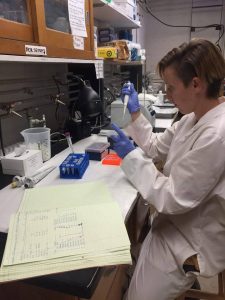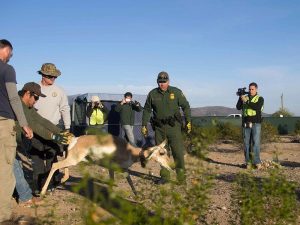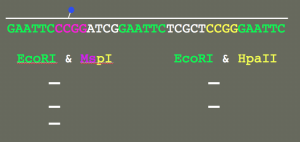(photo credit: AGFD)
For several decades, wildlife managers have relied on measurements of genetic diversity as an indicator of a population’s robustness to environmental perturbation. The applied field of conservation genetics has successfully adopted well-tested theory and, increasingly, powerful genome-probing technologies from the study of model species. Unfortunately, progress in linking genotypic variation to phenotypic variation in species of conservation concern has been limited due to the need for large sample sizes in systems lacking strict environmental control. Meanwhile, it is has become increasingly clear that epigenetic variation plays a large role in phenotypic variation and population response. It is therefore imperative that we explore the role of epigenetic variation in wild populations.
 I have surveyed epigenetic and genetic variation within and between subspecies of pronghorn, Antilocapra americana. Modeling the evolutionary potential of the endangered A. a. sonoriensis subspecies is of particular interest to managers given the threat posed to the subspecies by climate change. I conducted a survey of genetic (at microsatellite loci) and epigenetic variation (measured by MS-AFLP) between A. a. sonoriensis and the non-endangered A. a. americana subspecies. Additionally, I measured the annual stability of epigenetic variation within the recently re-introduced semi-captive population of A. a. sonoriensis and assessed if epigenetic differentiation exists within this population due to ancestry, age class, and sex.
I have surveyed epigenetic and genetic variation within and between subspecies of pronghorn, Antilocapra americana. Modeling the evolutionary potential of the endangered A. a. sonoriensis subspecies is of particular interest to managers given the threat posed to the subspecies by climate change. I conducted a survey of genetic (at microsatellite loci) and epigenetic variation (measured by MS-AFLP) between A. a. sonoriensis and the non-endangered A. a. americana subspecies. Additionally, I measured the annual stability of epigenetic variation within the recently re-introduced semi-captive population of A. a. sonoriensis and assessed if epigenetic differentiation exists within this population due to ancestry, age class, and sex.
Read about my results in my upcoming manuscript.

